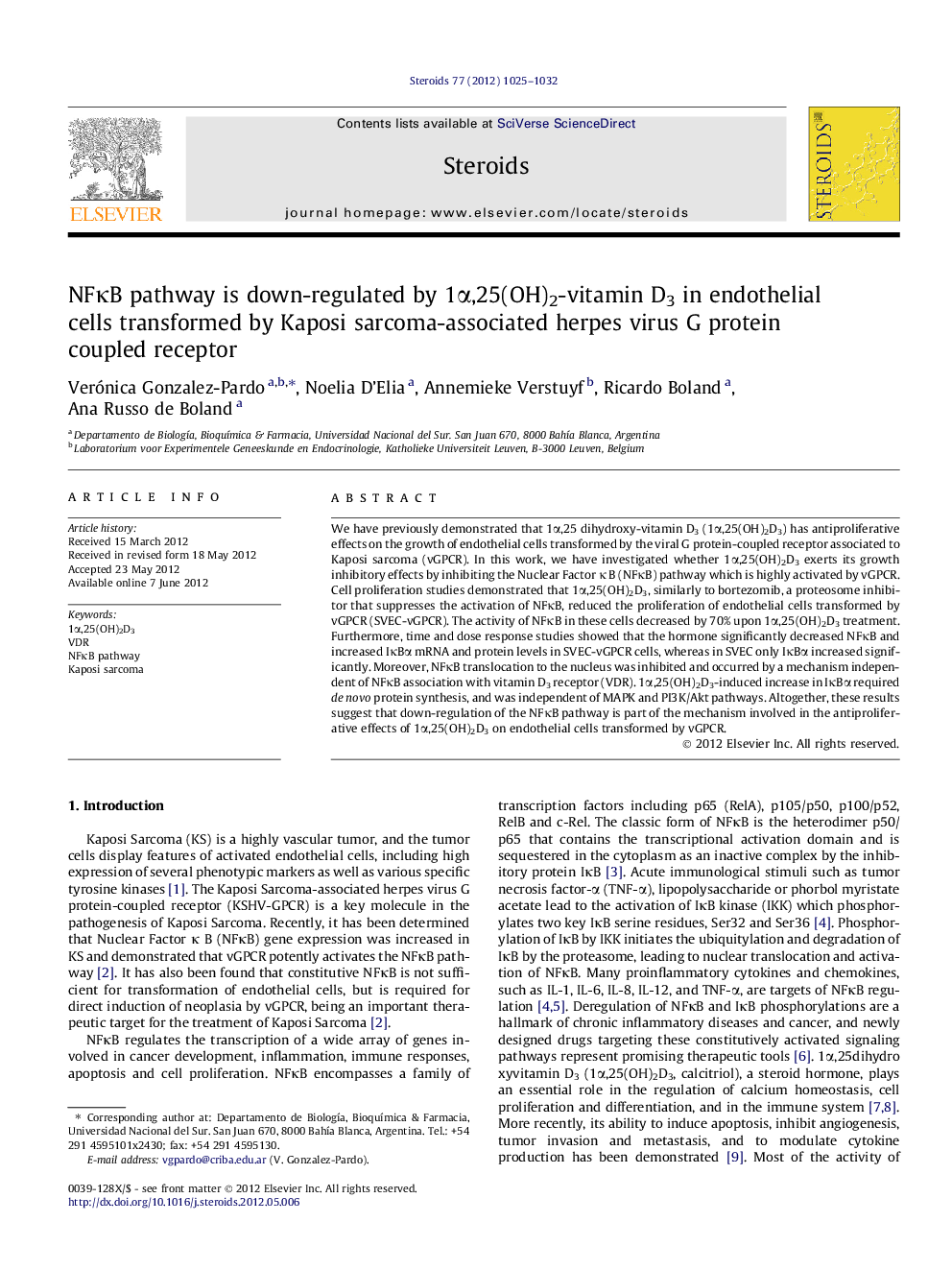| Article ID | Journal | Published Year | Pages | File Type |
|---|---|---|---|---|
| 2028286 | Steroids | 2012 | 8 Pages |
We have previously demonstrated that 1α,25 dihydroxy-vitamin D3 (1α,25(OH)2D3) has antiproliferative effects on the growth of endothelial cells transformed by the viral G protein-coupled receptor associated to Kaposi sarcoma (vGPCR). In this work, we have investigated whether 1α,25(OH)2D3 exerts its growth inhibitory effects by inhibiting the Nuclear Factor κ B (NFκB) pathway which is highly activated by vGPCR. Cell proliferation studies demonstrated that 1α,25(OH)2D3, similarly to bortezomib, a proteosome inhibitor that suppresses the activation of NFκB, reduced the proliferation of endothelial cells transformed by vGPCR (SVEC-vGPCR). The activity of NFκB in these cells decreased by 70% upon 1α,25(OH)2D3 treatment. Furthermore, time and dose response studies showed that the hormone significantly decreased NFκB and increased IκBα mRNA and protein levels in SVEC-vGPCR cells, whereas in SVEC only IκBα increased significantly. Moreover, NFκB translocation to the nucleus was inhibited and occurred by a mechanism independent of NFκB association with vitamin D3 receptor (VDR). 1α,25(OH)2D3-induced increase in IκBα required de novo protein synthesis, and was independent of MAPK and PI3K/Akt pathways. Altogether, these results suggest that down-regulation of the NFκB pathway is part of the mechanism involved in the antiproliferative effects of 1α,25(OH)2D3 on endothelial cells transformed by vGPCR.
► 1α,25(OH)2D3 down regulates cell proliferation and NFκB activity in SVEC-vGPCR. ► 1α,25(OH)2D3 down regulates NFκB mRNA and protein levels in SVEC-vGPCR. ► 1α,25(OH)2D3 up regulates the inhibitory protein IκBα. ► 1α,25(OH)2D3 inhibits the translocation of NFκB/IκBα to the nucleus.
